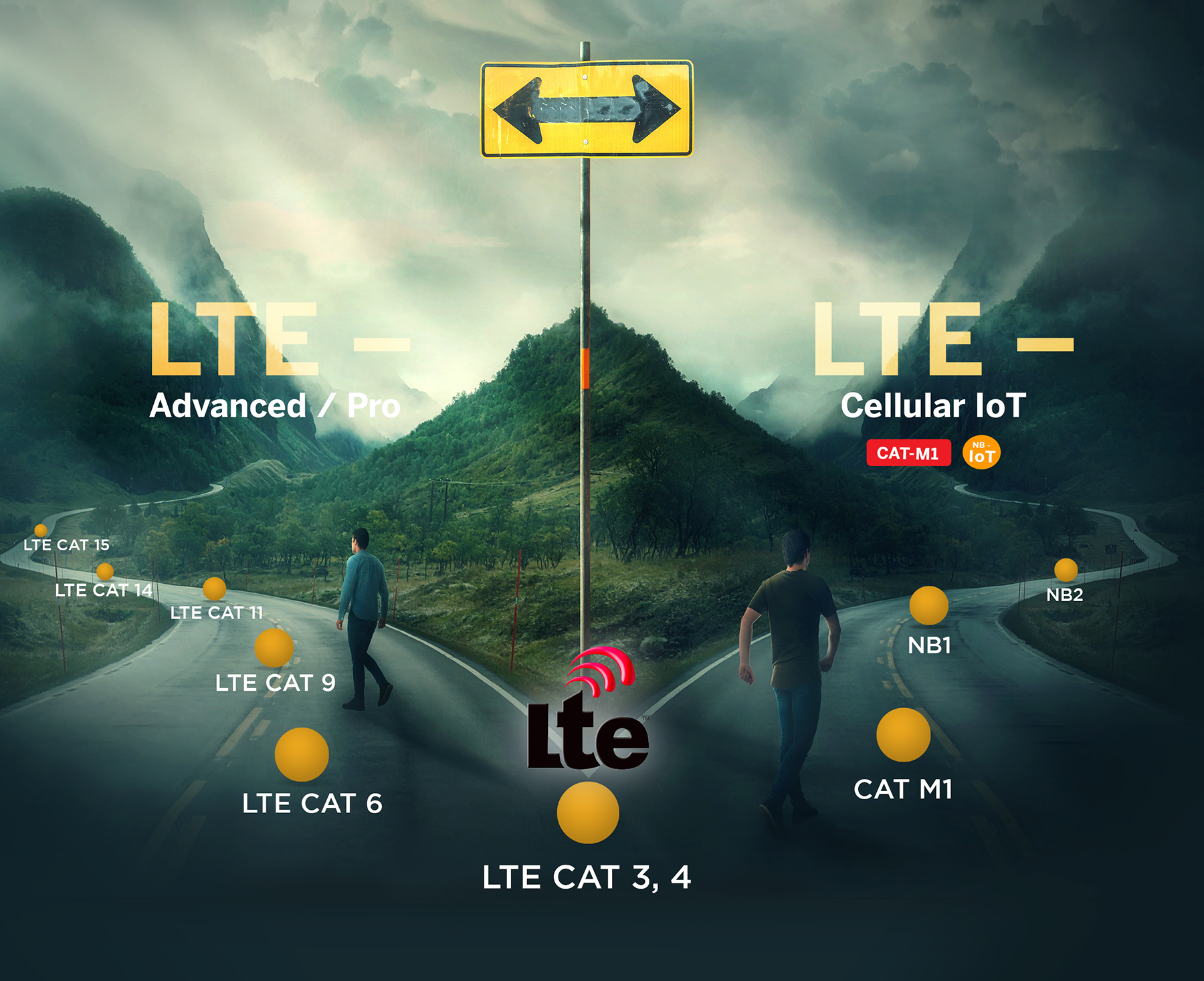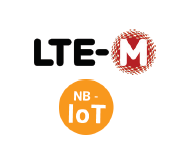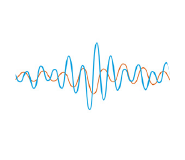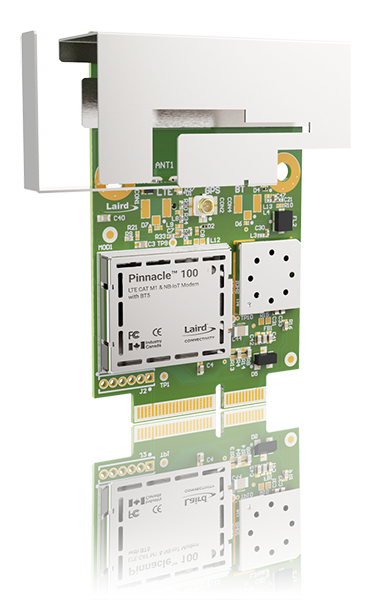Why Choose Cellular for Your Wireless Solution?
A User Guide to Simplifying LTE-M/NB-IoT Design Projects
A User Guide to Simplifying LTE-M/NB-IoT Design Projects
If you ever use your smartphone to map out a driving route, you have probably run into a situation where the app suggests a route that makes absolutely no sense whatsoever. Here is a perfect example: the navigation app on one of our phones suggested a circuitous route through unpaved forestry roads that are likely still blocked by winter snow—a route that would have added hours to a simple road trip from a suburb to the Benihana restaurant downtown, just a few miles away. That was not exactly the fastest route.
What does that have to do with a topic like cellular IoT? There are always multiple routes from point A to point B, but some often make much more sense than others. Designing cellular LTE technology is complex and that means there are many potentially arduous routes you could take to complete your design project. Some of those routes might just add time and cost, like all unnecessary detours. Or worse, some might mean you never arrive successfully at your destination.
The goal of this white paper is to help product engineers map out a more direct path to designing low-power cellular LTE connectivity into their products; ideally product engineers/ developers who do not live and breathe cellular design but will soon be tasked with IoT design projects that require an understanding of how to use the new low-power cellular protocols LTE CAT M1 (aka CAT M1) and NB-IoT in conjunction with more familiar technologies like Bluetooth Low Energy (BLE). Engineers in this space have already had to learn the complexities of working with other technologies like ZigBee, Wi-Fi, and LoRA for prior IoT projects, but cellular has an even steeper learning curve. This white paper is written to provide those engineers with a route that simplifies the process of completing IoT projects with these new cellular protocols, without the metaphorical detours and dead ends that we discussed above. Designing low power, connected features into a product is challenging with any wireless technology, but it is particularly challenging with cellular LTE technology, so it is important to avoid making it even harder by taking the long way around.
Designing low power, connected features into a product is challenging with any wireless technology, but it is particularly challenging with cellular LTE technology, so it is important to avoid making it even harder by taking the long way around.
In the past, cellular connectivity for battery powered devices like those used in IoT deployments was impractical in most situations; cellular architecture and protocols for GPRS, CDMA, and LTE involved hardware costs that were too high and “always on” radio architecture that drained batteries very quickly. Those qualities may have been OK for devices like smartphones because those characteristics were manageable downsides of providing the functionality that users wanted. But the high cost and high energy usage were a poor fit for IoT projects such as wireless sensors in industrial plants, environmental sensors, and smart building networks. This report by McKinsey & Company does an excellent job of discussing the qualities that made cellular a tough choice for engineers in the past. Those disadvantages overshadowed the strengths of cellular for IoT, including the extensive existing infrastructure, a clearly defined specification, and a long-term roadmap for cellular that ensures future-proofing.
But two new low-power versions of LTE technology—CAT M1 and NB-IoT—were designed to address those cost and energy inefficiency challenges in ways that allow engineers to take advantage of the strengths of cellular infrastructure. Essentially, there is a split in the LTE development path. One route, what you might think of when you hear 5G, is optimized for very high speeds and very low latencies for futuristic applications like conducting remote surgeries or streaming theater quality movies to your home. The other route, what we’ll focus on here, is optimized for lower-throughput, lower-power devices like those in IoT deployments.

Global System for Mobile Communications, or GSMA, is a trade organization that represents the interests of mobile network operators worldwide. They have an excellent discussion of the two protocols on their website about low-power cellular, from which we have adapted these overviews of the two technologies:
GSMA defines LTE CAT M1 as “a low power wide area technology which supports IoT through lower device complexity and provides extended coverage, while allowing the reuse of the LTE installed base. This allows battery lifetime as long as 10 years or more for a wide range of use cases, with the modem costs reduced to 20-25 percent of the current EGPRS modems.” LTE-M has a wider bandwidth, which allows it to be used in more physical locations and for applications that require higher data transfer. However, those advantages come with a tradeoff: that flexibility and data rate make it a more expensive option for engineers.

GSMA defines NB-IoT (abbreviated from NarrowBand for IoT) as “a standards-based low power wide area (LPWA) technology developed to enable a wide range of new IoT devices and services.” NB-IoT significantly improves the power consumption of user devices, system capacity and spectrum efficiency, especially in deep coverage. Battery life of more than 10 years can be supported for a wide range of use cases. Its narrower band and lower data usage rate are advantages for battery efficiency and cost, but it is less flexible than LTE-M in where and how it can be deployed.

NB-IoT and CAT M1 were designed to give engineers sister technologies with complementary capabilities suited to two of product manufacturers most common needs: one option that puts the emphasis on extending battery life and minimizing cost and another option that provides more flexibility and performance. It is worth noting that CAT M1 received a significant boost in early adoption as carriers used it to replace 2G networks that were being phased out. One of the primary ways that 2G was still used was for fleet tracking and fleet management applications, which are essentially M2M applications ideally suited to the capabilities of CAT M1. That has proven to be an early validation of these technologies and adoption continues to grow for other IoT applications.
Cellular has significant advantages for many IoT applications, but the complexity of working with it has caused a slow start for adoption. Nordic Semiconductor recently reported that “the adoption of cellular internet-of-things (IoT) technologies is not being slowed by the high price of chipsets, but by the complexity of their design.” The complexity of designing with cellular technology is amplified in an IoT environment because of how difficult it is to plan and execute successful IoT products and implementations. IoTforAll.com captures that idea in a piece with the apt wording “…IoT Is Hard” in the title: “…the software necessary to reach from the sensors to enterprise is the integration glue and requires deep connected systems experience (skills sets intimate with embedded systems, connectivity, and real-time, time series based systems) to develop industrial grade, end-to-end systems.” Even a highly-skilled engineer with experience working with other wireless technologies may be intimidated by the degree of difficulty of IoT projects involving cellular.
Those combined factors cause adoption among product companies to be slow and cautious. That slow start mirrors the cautious pace of the largest network providers, who are quite deliberate in welcoming new technology standards, to ensure that new technologies connecting to their networks have the robustness, reliability, and performance to play well in the sandbox. But we believe that adoption of NB-IoT and CAT M1 is poised to accelerate in the coming months.
This will change because the advantage of LTE-M and NB-IoT’s remarkable battery life, cost-effective data usage, and ubiquitous cell infrastructure will be embraced by an increasing number of manufacturers as the ideal protocol for many of the IoT initiatives in the pipeline. And it will change because enough pilot projects have been conducted to reassure network providers that the two cellular IoT technologies work well at scale with their networks.
Industry analysts see the market the same way, predicting very robust growth that will fill engineers’ project pipelines with cellular IoT design tasks. Their projections are staggering, with industry experts “projecting the number of cellular-connected devices to grow to 1.8 billion by 2023,” with IoT serving as a major driver of that growth. Based on research we have reviewed and conducted, we project tenfold growth in the number of NB-IoT and CAT M1 devices over the next four years, increasing to more than 280 million annually in that timeframe. A guest column in Medium.com makes the point as clearly as any commentary we have seen: “cellular is the key to unlocking the massive, positive, potential of the Internet of Things.”
With that many projects on the horizon involving cellular IoT, engineers cannot afford to take a circuitous route to finish those projects. Understanding and streamlining this design process is going to be critical to keeping up with the growing market demand for low power, wirelessly-connected devices with ability to connect to the global LTE networks.
...Projections are staggering with industry experts “projecting the number of cellular-connected devices to grow to 1.8 billion by 2023,” with IoT serving as a major driver of that growth.
All of the trends we discussed here mean that there will be a lot of cellular IoT projects in the near future for product engineers. But unless you are a wireless engineer with true expertise in cellular design and certification, it is important to have some guiding principles and tips to get from Point A to Point B in as direct and successful a way as possible. Below is a series of best practices and caveats that our team suggests you factor into your cellular IoT strategy and your design projects:
One of the most common misconceptions we hear about cellular IoT is that an organization needs to choose between LTE-M and NB-IoT. It is common because so many other wireless technologies have differing “flavors” that you need to choose between early in a planning process for a specific product or for a phase of your engineering cycle. Cellular IoT is a bit different in that the developers of these standards designed them to be complementary and usable within the same implementations. Some devices in a network (and the jobs they are assigned to do) may mean that the longer battery life and other qualities of NB-IoT are ideal. Meanwhile, another device elsewhere in the same network may have a role that makes the flexibility and wider band range the best fit, for example, to do an over-the-air firmware update. The key is to understand that cellular IoT does not force you to make an either/or decision. Instead, the key decisions are for each device that is being designed and the role that the device will play. This gives engineers the responsibility to make the right choice for each project and do so by thinking ahead to where and how the device will be used.

This is another caveat about avoiding an either/or approach to your cellular IoT projects. Yes, your organization may decide that NB-IoT and LTE-M are the right technologies for how your networks of sensors and devices send and receive data to the cloud and to your core computing systems, but that does not mean there is not an important role for other wireless technologies. For example, the best strategy for communicating between devices might be to employ low-power Bluetooth in conjunction with cellular LPWA—utilizing both on the same device to optimize how devices talk, the roles that they play, and the best way to optimize battery performance and data transference within a network. Talking about this possibility of combining technologies is best done early in the planning process for an IoT project, with discussion of how to pick the right technology for each job and then work with modules, modems, and kits that simplify the process of linking and certifying
those technologies together on
each device.

Product engineers working on cellular IoT devices are naturally focused on the device itself, but one of the most important things to plan early in projects is how cloud connectivity plays in the IoT implementation. Cloud connectivity is critical to every IoT project—regardless of the wireless technology being used—and it is particularly important for cellular IoT because data management can have such a big impact on operational costs. Yes, NB-IOT and LTE-M are designed to make data costs manageable for IoT deployments, but there are still data costs and those costs can be high or low depending on how you design your products and how they interact with the cloud. The “pipe” for data transfer with these cellular IoT protocols is quite narrow, so setting up your device to continuously send data to the cloud will rack up significant costs. Simply put, oversharing can cost you a lot especially when it is multiplied across dozens or hundreds or thousands of IoT devices. Conversely, the point of having cloud connectivity in IoT deployments is to offload much of the burden of data storage and processing from the device in order to minimize energy usage, size, cost, etc. There is a balance to be struck between what the device sends to the cloud, what the cloud asks for, and how the two collaborate to optimize performance and data costs.

Certification for any wireless technology is hard, as any engineer who works with Bluetooth or Wi-Fi knows. But cellular certification is much harder because there are three layers of certification. Certification with the national regulatory bodies like the FCC. Then certification with international industry associations like PTCRB and GCF. And finally, certifications with individual carriers who often have their own certification process before devices are allowed to connect to their networks. Because of this rigorous and costly certification process, it is imperative that engineers plan for certification on day 1 of the discussions for an IoT initiative, factoring in time for certifications into the overall timeline, and looking for ways to simplify certifications by using end device modems and modules from major providers.
Another critical thing to think about early on is testing that is well-suited for the combination of technologies that will be in many IoT products. As we discussed above, many engineering teams will pair NB-IoT and LTE-M with other technologies like Bluetooth to take advantage of the capabilities of all of them to accomplish the goals of the implementation. Combining multiple technologies into a single device creates complexities when it comes to testing, which is why it is important to perform co-located testing with a provider that has expertise in the nuances of that process and can help you complete it successfully. All the better if you also ask that testing partner to play an advisory role at key points in the design process to ensure that you are using best practices for antenna location, shielding, and other technical decisions that impact testing results and certification success.

The sheer number of antennas available for wireless projects is staggering. There are thousands of them in every shape and size and combination of technologies. It can be an overwhelming selection process. And it is a high-stakes choice for engineers, because the antenna and how it is integrated into a design has such a big impact on the performance of a device and the success of overall IoT deployment. Antenna selection gets even more complex for cellular IoT because the frequency range is so wide, with different carriers using different segments of the band. This means identifying your carrier likely plays a role in which antenna you choose. Knowing the physical location of the deployment also impacts antenna selection. And so do factors such as whether you plan to combine NB-IoT and LTE-M with a complementary wireless technology like Bluetooth. Working with a consultant or firm with expertise in antenna selection and custom antenna design makes it far more likely that the antenna you choose for each device will be optimized for the environment and application.
As we discussed earlier in the suggestions about certifications and antennas, identifying your carrier has substantive impacts on decisions engineers make during the design process. A discussion about carriers should take place as early as possible in the planning process for an IoT initiative, but many organizations may not think of it until far too late because this was not a consideration for their prior IoT projects that only used Wi-Fi, Bluetooth, or LoRa. When your team does discuss this, it is important to align your project’s needs with the capabilities of each carrier—choosing one with the coverage map, network performance, certification, and cost that best suits your project. That carrier selection should play a leading role in each step of the design process, ensuring that your device is tuned to the location of their towers, their segment of the wireless band, their certification process, and more.
One of the most common misconceptions we hear about cellular IoT is that an organization needs to choose between LTE-M and NB-IoT. It is common because so many other wireless technologies have differing “flavors” that you need to choose between early in a planning process for a specific product or for a phase of your engineering cycle. Cellular IoT is a bit different in that the developers of these standards designed them to be complementary and usable within the same implementations. Some devices in a network (and the jobs they are assigned to do) may mean that the longer battery life and other qualities of NB-IoT are ideal. Meanwhile, another device elsewhere in the same network may have a role that makes the flexibility and wider band range the best fit, for example, to do an over-the-air firmware update. The key is to understand that cellular IoT does not force you to make an either/or decision. Instead, the key decisions are for each device that is being designed and the role that the device will play. This gives engineers the responsibility to make the right choice for each project and do so by thinking ahead to where and how the device will be used.

This is another caveat about avoiding an either/or approach to your cellular IoT projects. Yes, your organization may decide that NB-IoT and LTE-M are the right technologies for how your networks of sensors and devices send and receive data to the cloud and to your core computing systems, but that does not mean there is not an important role for other wireless technologies. For example, the best strategy for communicating between devices might be to employ low-power Bluetooth in conjunction with cellular LPWA—utilizing both on the same device to optimize how devices talk, the roles that they play, and the best way to optimize battery performance and data transference within a network. Talking about this possibility of combining technologies is best done early in the planning process for an IoT project, with discussion of how to pick the right technology for each job and then work with modules, modems, and kits that simplify the process of linking and certifying
those technologies together on
each device.

Product engineers working on cellular IoT devices are naturally focused on the device itself, but one of the most important things to plan early in projects is how cloud connectivity plays in the IoT implementation. Cloud connectivity is critical to every IoT project—regardless of the wireless technology being used—and it is particularly important for cellular IoT because data management can have such a big impact on operational costs. Yes, NB-IOT and LTE-M are designed to make data costs manageable for IoT deployments, but there are still data costs and those costs can be high or low depending on how you design your products and how they interact with the cloud. The “pipe” for data transfer with these cellular IoT protocols is quite narrow, so setting up your device to continuously send data to the cloud will rack up significant costs. Simply put, oversharing can cost you a lot especially when it is multiplied across dozens or hundreds or thousands of IoT devices. Conversely, the point of having cloud connectivity in IoT deployments is to offload much of the burden of data storage and processing from the device in order to minimize energy usage, size, cost, etc. There is a balance to be struck between what the device sends to the cloud, what the cloud asks for, and how the two collaborate to optimize performance and data costs.

Certification for any wireless technology is hard, as any engineer who works with Bluetooth or Wi-Fi knows. But cellular certification is much harder because there are three layers of certification. Certification with the national regulatory bodies like the FCC. Then certification with international industry associations like PTCRB and GCF. And finally, certifications with individual carriers who often have their own certification process before devices are allowed to connect to their networks. Because of this rigorous and costly certification process, it is imperative that engineers plan for certification on day 1 of the discussions for an IoT initiative, factoring in time for certifications into the overall timeline, and looking for ways to simplify certifications by using end device modems and modules from major providers.
Another critical thing to think about early on is testing that is well-suited for the combination of technologies that will be in many IoT products. As we discussed above, many engineering teams will pair NB-IoT and LTE-M with other technologies like Bluetooth to take advantage of the capabilities of all of them to accomplish the goals of the implementation. Combining multiple technologies into a single device creates complexities when it comes to testing, which is why it is important to perform co-located testing with a provider that has expertise in the nuances of that process and can help you complete it successfully. All the better if you also ask that testing partner to play an advisory role at key points in the design process to ensure that you are using best practices for antenna location, shielding, and other technical decisions that impact testing results and certification success.

The sheer number of antennas available for wireless projects is staggering. There are thousands of them in every shape and size and combination of technologies. It can be an overwhelming selection process. And it is a high-stakes choice for engineers, because the antenna and how it is integrated into a design has such a big impact on the performance of a device and the success of overall IoT deployment. Antenna selection gets even more complex for cellular IoT because the frequency range is so wide, with different carriers using different segments of the band. This means identifying your carrier likely plays a role in which antenna you choose. Knowing the physical location of the deployment also impacts antenna selection. And so do factors such as whether you plan to combine NB-IoT and LTE-M with a complementary wireless technology like Bluetooth. Working with a consultant or firm with expertise in antenna selection and custom antenna design makes it far more likely that the antenna you choose for each device will be optimized for the environment and application.
As we discussed earlier in the suggestions about certifications and antennas, identifying your carrier has substantive impacts on decisions engineers make during the design process. A discussion about carriers should take place as early as possible in the planning process for an IoT initiative, but many organizations may not think of it until far too late because this was not a consideration for their prior IoT projects that only used Wi-Fi, Bluetooth, or LoRa. When your team does discuss this, it is important to align your project’s needs with the capabilities of each carrier—choosing one with the coverage map, network performance, certification, and cost that best suits your project. That carrier selection should play a leading role in each step of the design process, ensuring that your device is tuned to the location of their towers, their segment of the wireless band, their certification process, and more.
Every engineer we know needs more sleep. We are talking about the sleep mode options that are part of cellular IoT and that play a critical role in enabling the remarkable battery life that is so well-suited to IoT deployments. Engineers should understand how to set power-saving modes during the design process, when to use deep sleep modes, how to orchestrate devices that have varying sleep settings, and how to coordinate with complementary technologies like Wi-Fi and Bluetooth that have different sleep/wake cycles as part of their battery management capabilities. The key sleep cycle terms to familiarize yourself with are PSM and eDRX which work in concert with each other to make battery life of up to 10 years possible.
PSM, which stands for Power Saving Mode, allows devices to be programmed to go into a deep sleep mode while still being reachable. You can program the sleep cycle with a variety of parameters, sleeping for a moment or more than a year. It saves power almost to the same degree that powering a device off would achieve, yet the device still remains registered with the network and does not need to expend time and energy re-establishing network connections. This saves significant energy consumption during dormancy and during the period when it wakes up to send data, receive data, or take an action.
The other sleep cycle feature to take advantage of is eDRX (Extended Discontinuous Reception), which allows engineers to optimize the length of time between paging cycles. Typical paging cycles for LTE devices are 1.28 seconds in between periods when the network can make contact and potentially deliver data and instructions. CAT M1 and NB-IoT allow these paging cycles to be expanded by a factor of 8x to 10.24 seconds, which is significant on its own. But eDRX allows engineers to program consecutive series of 10.24-second periods before a device actually activates a paging window. This allows far more dramatic energy savings that allow that 10-year battery life goal to be achievable.
Every engineer we know needs more sleep. We are talking about the sleep mode options that are part of cellular IoT and that play a critical role in enabling the remarkable battery life that is so well-suited to IoT deployments. Engineers should understand how to set power-saving modes during the design process, when to use deep sleep modes, how to orchestrate devices that have varying sleep settings, and how to coordinate with complementary technologies like Wi-Fi and Bluetooth that have different sleep/wake cycles as part of their battery management capabilities. The key sleep cycle terms to familiarize yourself with are PSM and eDRX which work in concert with each other to make battery life of up to 10 years possible.
PSM, which stands for Power Saving Mode, allows devices to be programmed to go into a deep sleep mode while still being reachable. You can program the sleep cycle with a variety of parameters, sleeping for a moment or more than a year. It saves power almost to the same degree that powering a device off would achieve, yet the device still remains registered with the network and does not need to expend time and energy re-establishing network connections. This saves significant energy consumption during dormancy and during the period when it wakes up to send data, receive data, or take an action.
The other sleep cycle feature to take advantage of is eDRX (Extended Discontinuous Reception), which allows engineers to optimize the length of time between paging cycles. Typical paging cycles for LTE devices are 1.28 seconds in between periods when the network can make contact and potentially deliver data and instructions. CAT M1 and NB-IoT allow these paging cycles to be expanded by a factor of 8x to 10.24 seconds, which is significant on its own. But eDRX allows engineers to program consecutive series of 10.24-second periods before a device actually activates a paging window. This allows far more dramatic energy savings that allow that 10-year battery life goal to be achievable.
Combining multiple technologies into a single device creates complexities when it comes to testing, which is why it is important to perform co-located testing with a provider that has expertise in the nuances of that process and can help you complete it successfully.
Similar to looking up directions to a new location, it is important to carefully consider all of your routes. While one route may be the obvious choice, there may be a better option that does not prolong your journey to fried rice and flaming onion volcanos at Benihana. Understanding cellular for IoT is essential for the future of connectivity in order to make the most educated choice.
There are myriad choices to get from point A to point B, whether you are trying to plot a course to visit a friend or find a bite to eat, or you are planning a wireless IoT system. That said, there are some forks in the road that take you there faster, saving you time and money, and others that may be the scenic route or, at the very worst, dead ends. We hope that this study is not a roadmap for your particular journey, but a way to better read the map and decide which road to take. Safe travels!
Ezurio's (formerly Laird Connectivity) Pinnacle™ 100 Series seamlessly combines low-power cellular LTE and Bluetooth 5 technology into one fully-integrated solution. This unique combination enables new use cases using low-cost, long-range Bluetooth sensors all connected to the next generation LTE network in a much simpler and lower cost solution architecture.
The Pinnacle 100 incorporates a powerful Cortex M4F controller running a hostless Zephyr RTOS-based software implementation, complete Bluetooth 5 functionality, and LTE CAT-M1/NB-IoT capabilities – all fully-certified from a radio regulatory, cellular, and network carrier perspective. This intelligent modem additionally provides complete antenna flexibility, including pre-integrated embedded and external options such as Laird’s Revie Flex LTE and NB-IoT antenna.
This unique combination of capabilities simplifies common use cases like using a smartphone to configure and create an LTE connection in a product. It also enables new use cases combining multiple long-range meshed Bluetooth sensors connected to the Cloud over the evolving global low-power LTE network. Bridging Bluetooth sensors to a single intelligent LTE device allows customers to optimize sensor coverage and manage cellular data with a simple, low-cost architecture, not to mention decrease
time-to-market and deliver real-time insights.
